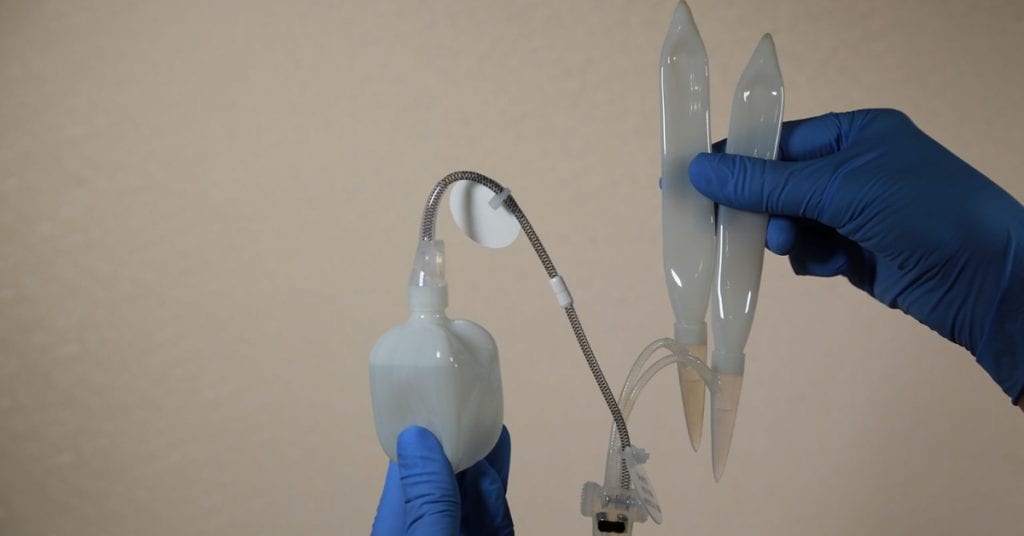Cost of Penile Implant for ED in India
| Treatment | Cost | Days in hospital | Days outside hospital | Total stay in India |
|---|---|---|---|---|
| Penile Implant for ED | USD 12000 | 4 | 8 | 12 |
Penile Implants
Penile implants, the devices which are implanted inside the penis so that men suffering from erectile dysfunction are able to get an erection. This treatment is recommended after the condition doesn’t respond well to any other type of treatment.
Penile implants are implanted through a penile implant surgery, where the prosthetic device is placed inside the penis and scrotum. This device can help the man have an erection again and regain sexual function. There are two main types of implants viz., semirigid and inflatable. Each work differently having its own pros and cons.
Purpose
Most men are able to treat their erectile dysfunction quite successfully with the use of a medications or a penis pump. Penile implants are considered when other treatments fail to help you get an erection for sexual activity.
It is to be noted that penile implants are not recommended for everyone. Your doctors might caution against them, if you are having situational erectile dysfunction, which is potentially reversible. If you are suffering from diabetes which you are unable to control well or an infection such as a urinary tract infection or pulmonary infection, then your doctor might recommend against penile implants as well.
It is also to be noted that though penile implants are able to allow men to get an erection again, they cannot increase one’s sexual desire or sensation. Penile implants also won’t be able to make your penis larger than it naturally is.
Types
Penile implants are of two main types:
Inflatable implants- Inflatable devices are the most common type of penile implants used. They can be inflated when an erection is required and kept deflated at other times. It involves placing two cylinders in the penis, a fluid-filled container in the abdomen and an inflatable pump in the scrotum. All of these are connected by a special tubing.
Squeezing the pump in the scrotum causes the fluid to move from the container into the cylinders, which creates an erection. When you squeeze the release valve, fluid is able to move out of the cylinder and back into the container which makes the penis flaccid again.
When inflated, this type of implant acts as well as feels like a natural erection. The implant feels natural and comfortable when it is in the flaccid state as well.
Semirigid rods- Semirigid devices are always firm. During sexual activity, the penis can be bent away from the body and towards the body at other times. They can also be set in different positions easily.
Even though using them is quite easy, some men may find their constant rigid state to be comfortable.
Preparation
Before the surgery, your doctor might recommend you to stop taking certain medications. This can include aspirin and anti-inflammatory drugs, as they can increase the risk of bleeding.
Penile implant surgery usually involves an overnight stay at the hospital. See if you can arrange for a ride home in advance.
Before your surgery, don’t consume any food or drink after midnight. If your doctor gives you any specific instructions, it is important that you follow them.
Procedure
Penile implant surgery is generally performed at a hospital or surgery center. You will first receive general anesthesia that will make you unconscious during the surgery. In some cases, spinal anesthesia is also used. This kind of anesthesia blocks pain in the lower part of the body.
You will also receive IV antibiotics as it can help to prevent infection. The surgery site will also be shaved before the surgery to reduce any risk of infection.
Then a catheter might be inserted into your bladder through the penis to collect urine. Your surgeon will next make an incision below the head of the penis. He/she might also choose to make the incision at the base of the penis in the lower abdomen.
Next, he/she will stretch the spongy tissue in the penis that would normally fill with blood during an erection. This tissue is known as the corpora cavernosa. Your surgeon will then decide the correct size of implant before placing it. Then he/she will place the implant cylinders inside the penis.
If a two piece inflatable device is being implanted, then your doctor will also place a pump and a valve inside the scrotum. For a three-piece device, your doctor will need to implant a fluid reservoir under the abdominal wall through an internal incision.
After the device is implanted, your surgeon will sew the incisions closed. Penile implant surgery can generally take up to an hour or two.
Recovery
Sometimes an overnight stay at the hospital might be required, though many men are able to go home the same day. After the procedure, you will need to take pain medication to help with discomfort and antibiotics to prevent any infection.
Your doctor will provide some additional instructions, which can include any of the following:
- Waiting for at least a month after the surgery before resuming any sexual activity
- When you will be able to resume your work, physical activity and exercise.
- Keeping the penis pointed towards the belly button and prevent it from being curved in a downward direction
Your doctor will also let you know when your stitches will be removed. He/she might recommend some exercises as well, that should help in your recovery.
Risks
A penile implant surgery comes with few risks, which include:
- Infection- Infection is possible, as with any surgery. If you have a spinal cord injury or diabetes, you might be at an increased risk of infection.
- Implant problems- Though penile implant designs are mostly reliable, in some rare cases the implants might malfunction. When such cases occur, surgery is necessary for repairing or replacing a broken implant.
- Internal Erosion or Adhesion- Sometimes, an implant can stick to the skin inside the penis or wear away the skin from inside the penis. In rare cases, an implant can also break through the skin. Such problems can sometimes lead to an infection.




